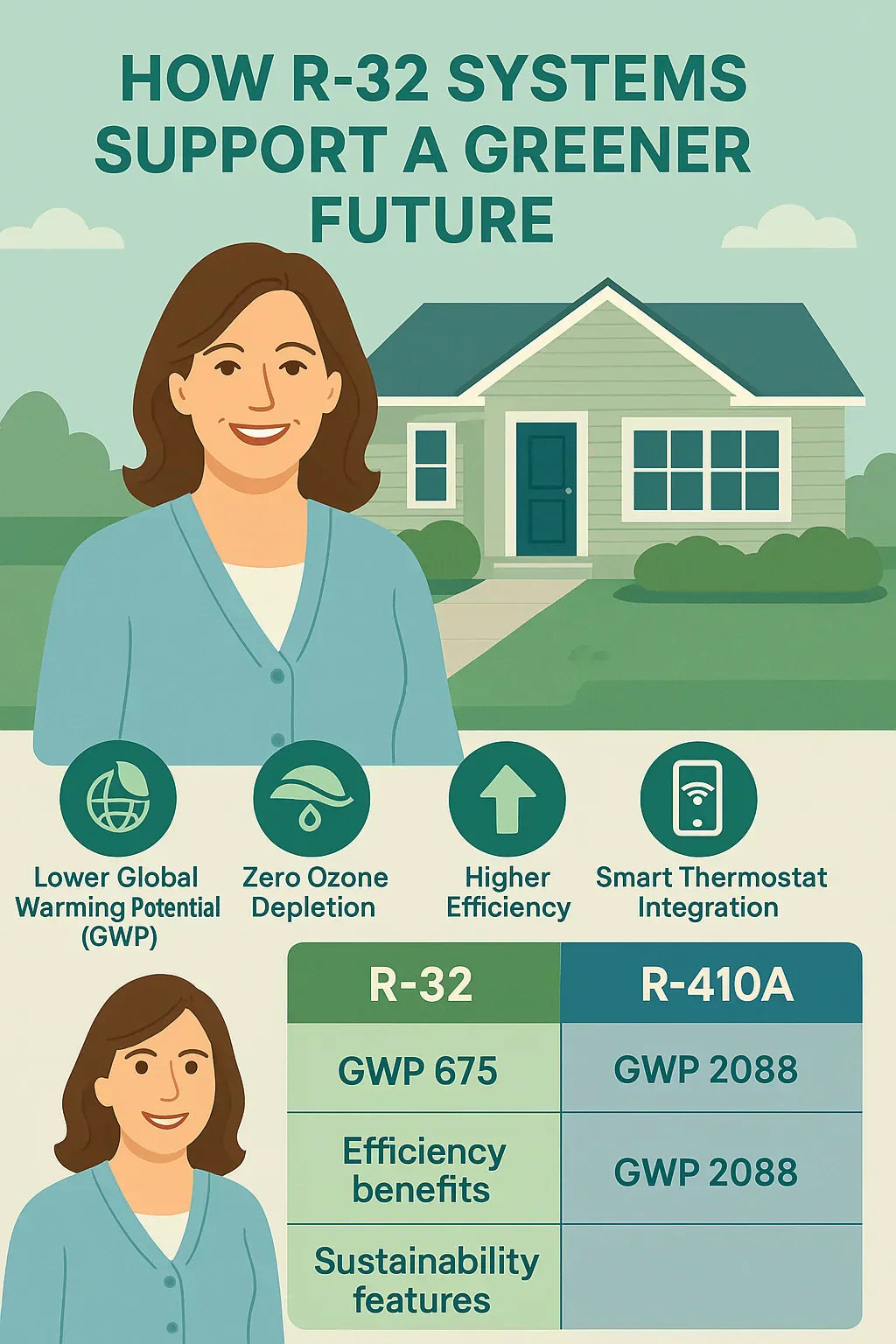As climate change becomes a more urgent global challenge, the HVAC industry is stepping up with cleaner, more efficient technologies. One of the most impactful changes? The shift from high-GWP refrigerants like R-410A to R-32, a next-generation refrigerant that offers both performance and environmental gains.
This guide explains the environmental advantages of R-32 HVAC systems — from global warming potential to ozone safety — and why choosing an R-32 system today is a smart step toward a more sustainable future.
🧪 What Is R-32?
R-32 (difluoromethane) is a single-component, low-GWP refrigerant used in modern air conditioners and heat pumps.
Key attributes:
-
GWP of 675 — nearly 70% lower than R-410A
-
Zero ozone depletion potential (ODP = 0)
-
Better thermal efficiency and lower charge requirement
🏭 Why We’re Moving Away from R-410A
R-410A has been the industry standard for over a decade, but:
-
Its GWP is 2,088, contributing significantly to climate change
-
It’s included in the AIM Act phase-down of HFCs
-
Handling it requires more energy per BTU of cooling
Under the U.S. AIM Act and the Kigali Amendment to the Montreal Protocol, R-410A is being gradually phased out.
👉 U.S. EPA HFC Phase-Down Timeline
🌬️ How R-32 Reduces Carbon Footprint
Because R-32 systems:
-
Require less refrigerant per system
-
Operate at higher energy efficiency
-
Have lower leakage-related emissions
they result in significantly reduced direct and indirect greenhouse gas emissions.
Example:
-
A typical R-32 unit can lower annual carbon emissions by 10–15% compared to an R-410A system.
👉 Daikin R-32 Environmental Benefits
⚖️ Environmental Tradeoffs: Is R-32 Perfect?
No refrigerant is entirely without impact. Consider:
-
R-32 is mildly flammable (A2L), so extra precautions are needed in design and installation
-
It still contributes to climate change, though at a much lower rate
Still, it is one of the most climate-responsible refrigerants approved for widespread residential use.
👉 ASHRAE Safety Classification Standards
🛠️ What Makes R-32 Systems More Eco-Efficient
| Feature | Environmental Benefit |
|---|---|
| Higher thermal conductivity | Reduces energy use |
| Lower GWP | Slows climate change |
| Lower refrigerant volume | Cuts emissions from leaks |
| ENERGY STAR compatibility | Boosts efficiency & savings |
Many R-32 systems are also equipped with smart thermostats and variable-speed compressors, which reduce energy waste.
🌎 Global Adoption of R-32
-
Over 100 countries have adopted R-32 in HVAC products
-
It is endorsed by organizations like the United Nations Environment Programme (UNEP) as a transition refrigerant
-
Major manufacturers like Daikin, Mitsubishi, LG, and Goodman have fully embraced R-32
🧠 Samantha’s Take: Choosing for the Long-Term
"The air conditioning system you choose today will run for 10–20 years. Choosing an R-32 unit isn’t just smart for your bills — it’s smart for your kids and the planet they’ll live in."
✅ Final Thoughts: HVAC That’s Future-Ready
R-32 systems represent one of the most accessible and effective ways for homeowners to reduce their environmental footprint — without sacrificing comfort or performance.
If you’re upgrading an old R-410A unit, switching to an R-32 model means:
-
Lower carbon emissions
-
Greater efficiency
-
Support for global climate goals
👉 See R-32 systems designed for performance and sustainability at The Furnace Outlet
In the next topic we will kow more about: Is R-32 Refrigerant Really Greener? What Homeowners Need to Know







